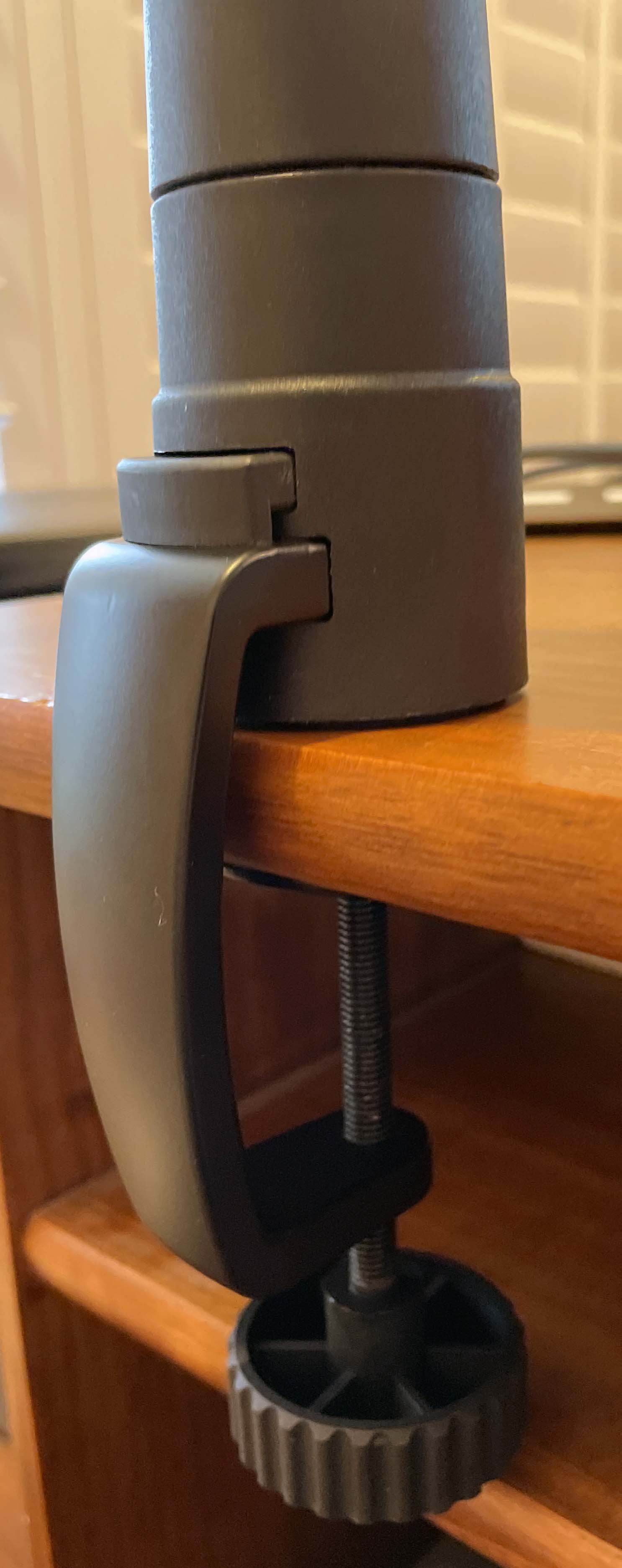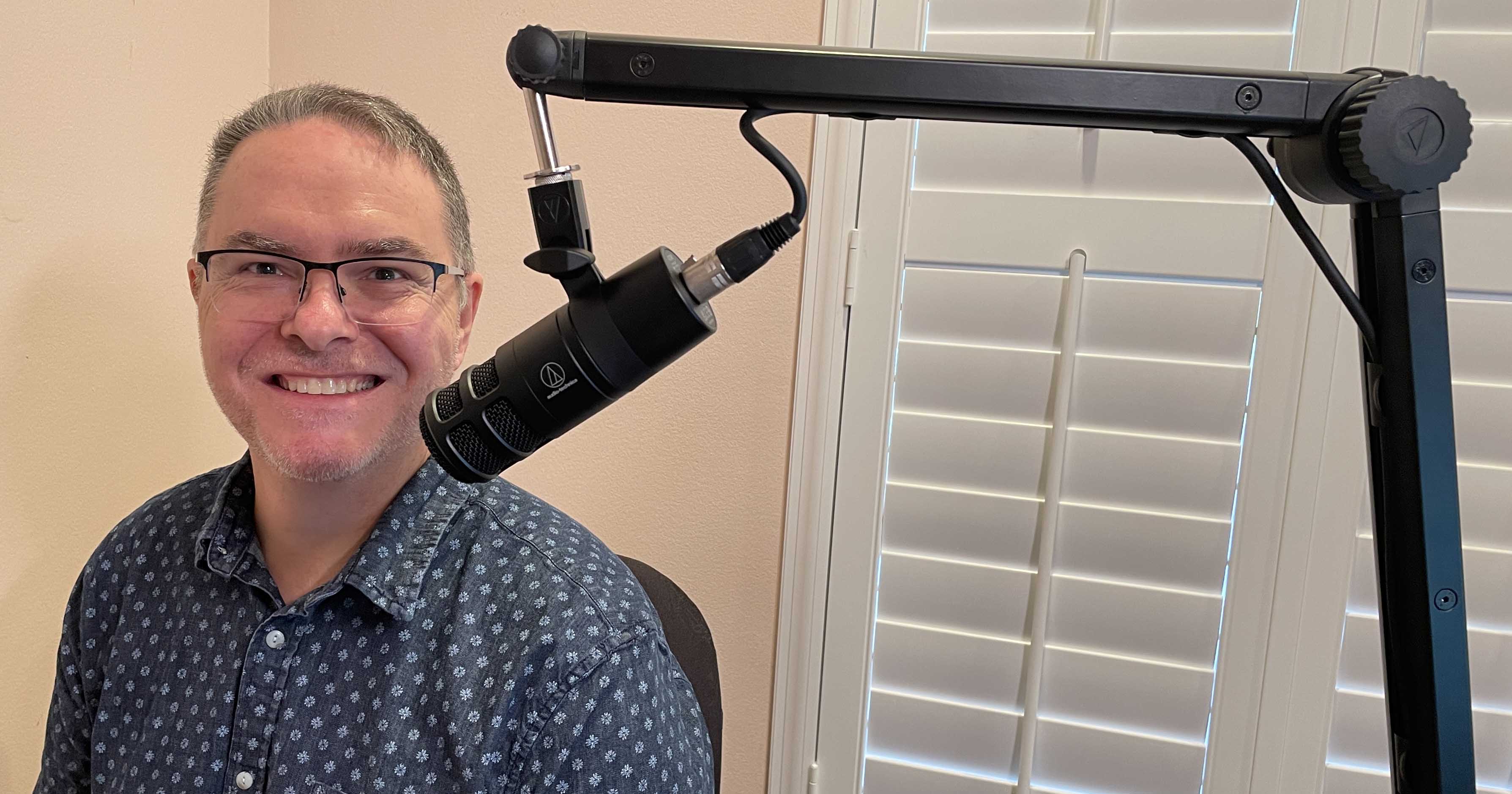Review: How Ultimate Support Systems’ New Boom Mic Stand Is Dressed for Success
The BCM-300 deluxe broadcast mic stand has several features to make sure your boom mic looks professional.

My desk is usually a mess, but I tend to keep my production gear organized and tidy. This is probably why Ultimate Support Systems' new BCM-300 deluxe broadcast mic stand appealed to me when I saw it at the ACT Entertainment booth on the InfoComm show floor. It’s an affordable piece of support equipment with a few features designed to keep your microphone in place and in order.

While many of us used to work hard to keep microphones out of the shot, today’s webcasts, visual radio programs, and even conference calls have no problem when the mic makes an on-screen appearance. With its slick design, internal springs, and integrated cable management, the matte black BCM-300 is certainly camera ready.
[Review: How to Produce an Affordable Podcast with Multiple Mics]
The base of the BCM-300 is basically a C-clamp with a locking system to hold the boom arm. The clamp can accommodate surfaces that are more than 2 inches thick, so you should have little trouble finding a home for it. You will need about a 2-inch lip on your table or work surface to properly position it.
Rubber pads on the jaws prevented the base from leaving a permanent ring on the edge of my pine (softwood) desk. The clamp itself is a mix of mostly metal with some plastic parts, such as the handle on the tightening screw. If you tend to “set it and forget it,” I doubt there will be durability issues.
The boom arm locks into the base, so you won’t dislodge it by accident, and a release button allows you to easily remove the boom arm for storage. Unlike a “twist” connection, the BCM-300 allows you to rotate the arm freely without worrying about spinning it off the base after one too many rotations. Of course, this also means the arm will move freely if you bump it, so consider its placement, particularly if you tend to talk with your hands.
With three points of adjustment, you have plenty of positioning flexibility for your mic. An extended 3.75-inch drop provides additional wiggle room to accommodate larger or side connecting mics.
A daily selection of the top stories for AV integrators, resellers and consultants. Sign up below.
I had no trouble positioning my Audio-Technica AT2040 podcast microphone—plenty of space (see photo below). My MXL Studio 1 USB, which uses a mic stand adapter and is designed for desktop use, hung securely from below the BCM-300 for seated recording and stayed upright from above for voice work while standing.
What really sold me was the channel in the middle of the boom arm that helps to hide your cable. Four clips, two in each major section of the arm, help keep your cable in place when you’ve locked in your mic position. It certainly looks better than Velcro or gaffer’s tape, but the clips are just thin plastic, so handle them with care.

“Just take my money.” You’ll find that pithy phrase (as well as NSFW variations) across the internet in reviews, GIFs, and memes. It’s not something I tend to say, but you might not be able to help yourself if you get your hands on the BCM-300 deluxe broadcast mic stand.
Yes, there are less expensive mic stands out there—Ultimate Support Systems, in fact, offers an external spring model, the JS-BCM-50, for less than $40. But for about $120, the BCM-300 offers internal springs and cable management for a clean, professional look, plus a rotating base that makes it easy to move your mic out of the way when the show’s over. The company even throws in a 6-foot XLR cable because, well, why not? If your boom mic is going to be a part of your next video, you might as well make it look its best.

Mark J. Pescatore, Ph.D., has been the content director of Systems Contractor News since 2021. During his career, he's hosted and programmed two ongoing regional industry trade shows (including Future B2B's AV/IT Summit), produced and hosted podcasts and webinars focused on the professional video marketplace, taught more than a dozen college communication courses, co-authored the book Working with HDV, and co-edited two editions of The Guide to Digital Television.
